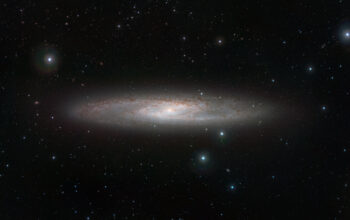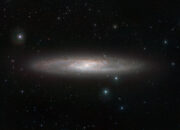Dark energy, a term that has emerged as a pivotal concept in contemporary cosmology, embodies one of the most profound mysteries that the universe has to offer. Imagine, if you will, a vast ocean where the waves are not visible, yet their influence is undeniably felt; the expansion of the universe is akin to this enigmatic essence that permeates our cosmos. It is both elusive and omnipresent, shaping the fate of galaxies while remaining shrouded in an enigma steeped in an intricate tapestry of theories and observations that span approximately 9 billion years.
The inception of the concept of dark energy arose in the late 1990s when two independent teams observed the behavior of distant supernovae. The data revealed that these celestial fireworks, which traditionally served as beacons to gauge cosmic distance, were dimmer than anticipated. Consequently, this suggested that the universe’s expansion was accelerating rather than decelerating, contrary to the prevailing paradigm. Thus emerged the notion of dark energy, a hypothetical form of energy held responsible for this cosmic acceleration.
In unearthing the nature of dark energy, it is imperative to delve into the cosmological constant, denoted by the Greek letter Lambda (Λ), introduced by Albert Einstein in his equations of general relativity. Initially, considered a mere mathematical contrivance to achieve a static universe—a model he later deemed his “greatest blunder”—the cosmological constant has been repurposed to articulate the properties of dark energy. With an ominous twist of fate, this seemingly innocuous constant has morphed into a central player in the grand narrative of cosmic evolution, maintaining a constant density pervading all of space-time.
The fabric of dark energy is often likened to a fine mist enveloping the universe, invisible to the naked eye yet exerting a profound influence on galactic formation and motion. This metaphor illustrates the challenges faced by scientists in their endeavor to elucidate its properties. The elusive nature of dark energy is juxtaposed with the captivating strategies employed by researchers to investigate its implications. Various approaches, including observations of the cosmic microwave background radiation, the distribution of galaxies, and the dynamics of galaxy clusters, have been implemented to quantify and comprehend this ethereal phenomenon.
While theories abound, several prominent models vie for acceptance in the scientific community. The quintessence model, for instance, posits that dark energy is not a constant force but rather a dynamic field that evolves over time. This perspective introduces a temporal dimension to dark energy, suggesting that it could transform in its role and intensity as the universe ages. In a particularly intriguing twist, this model evokes the image of an ancient entity, shrouded in mystery, whose essence changes as the cosmos unfolds.
Alternatively, the modified gravity theories propose that our understanding of gravity itself may require revision. The idea that modifications to Einstein’s general relativity could elucidate the behavior of distant galaxies presents a radical departure from conventional notions of dark energy and gravitational dynamics. The implications of such theories are profound, as they force a reconsideration of fundamental principles governing celestial motion and the structure of space-time. Thus, the narrative surrounding dark energy unfurls like a spiraling galaxy, where each arm represents a different theoretical perspective, each vying for a clearer picture of the underlying reality.
Despite the theoretical proliferation, empirical evidence remains crucial to anchoring our understanding of dark energy. Advances in technology have spurred initiatives such as the Dark Energy Survey and the Euclid mission, both aimed at constructing a more comprehensive map of our universe. These endeavors seek to refine measurements of cosmic expansion, illuminate the distribution of galaxies, and unravel the intricate web of structure formation. Through precision cosmology, researchers aspire to decipher the influence of dark energy, providing a more nuanced understanding of its role within the cosmic landscape.
In addition to empirical measurements, gravitational waves, ripples in spacetime produced by catastrophic events such as the merging of black holes, also offer a novel avenue for probing dark energy. The detection of such waves opens a stellar window into the workings of the universe, potentially revealing how dark energy interplays with gravity and the expansion of the cosmos. This intersection of dark energy and gravitational waves epitomizes the beauty of modern astrophysics, weaving together seemingly disparate threads into a cohesive narrative.
As we peer into the abyss of space, the enigma of dark energy persists, compelling scholars to ponder profound questions. What does it unveil about the fate of the universe? Will the ongoing influence of dark energy lead to an eventual “Big Freeze,” where galaxies drift farther apart until stars extinguish in a darkened cosmos? Alternatively, could dark energy evolve into an attractive force, ushering in a dramatic cosmic relay of structures? These questions linger, tantalizingly distant yet ever-pertinent, as researchers grapple with the ultimate fate of the universe.
In summation, dark energy represents an extraordinary paradox: a force that dominates cosmic dynamics yet eludes our fundamental understanding. Like a mysterious alchemist, it subtly transfigures the fabric of the universe, instigating an accelerating expansion that echoes through time. As scientists continue their exploration into this profound enigma, it offers not only a quest for knowledge but also an opportunity to reflect upon the very essence of existence in the vast and awe-inspiring cosmos.










